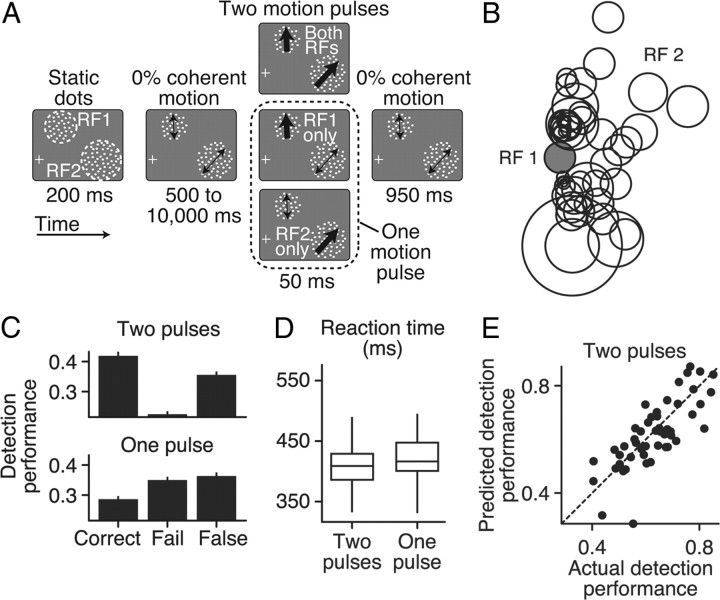Figure 1.
Task, stimulus, and subject behavior. A, Motion-detection task. Trials began with the presentation of two static RDPs. After the monkey fixated and pressed a lever, the RDPs remained static for 200 ms before they began moving with 0% coherent motion. The task was to release the lever within a 200–800 ms RT window after a 50 ms coherent motion pulse that occurred randomly between 500 and 10,000 ms (flat hazard function). The location of the motion pulse varied randomly on each trial, occurring in RF 1, RF 2, or simultaneously in both RFs. After the motion pulse occurred, RDPs continued moving with 0% coherent motion for 950 ms or until the lever was released. Motion speed, direction, and RDP size were matched to that preferred by each neuron. B, The normalized locations of RF 2 (white circles) with respect to RF 1 (gray circle). C, The relative proportions of correct, failed, and false-alarm trial outcomes for both the one and two pulse conditions. D, Box and whisker plots showing the median, lower and upper quartiles, and spread of the RTs for the one- and two-pulse conditions. E, Comparison of the predicted rate of correct detection (PS′; see Materials and Methods, Eq. 3) to the actual rate of correct detection (PS) on trials with two motion pulses, assuming probability summation. Predicted performance was computed from the actual performance on trials with one motion pulse (see Materials and Methods).

